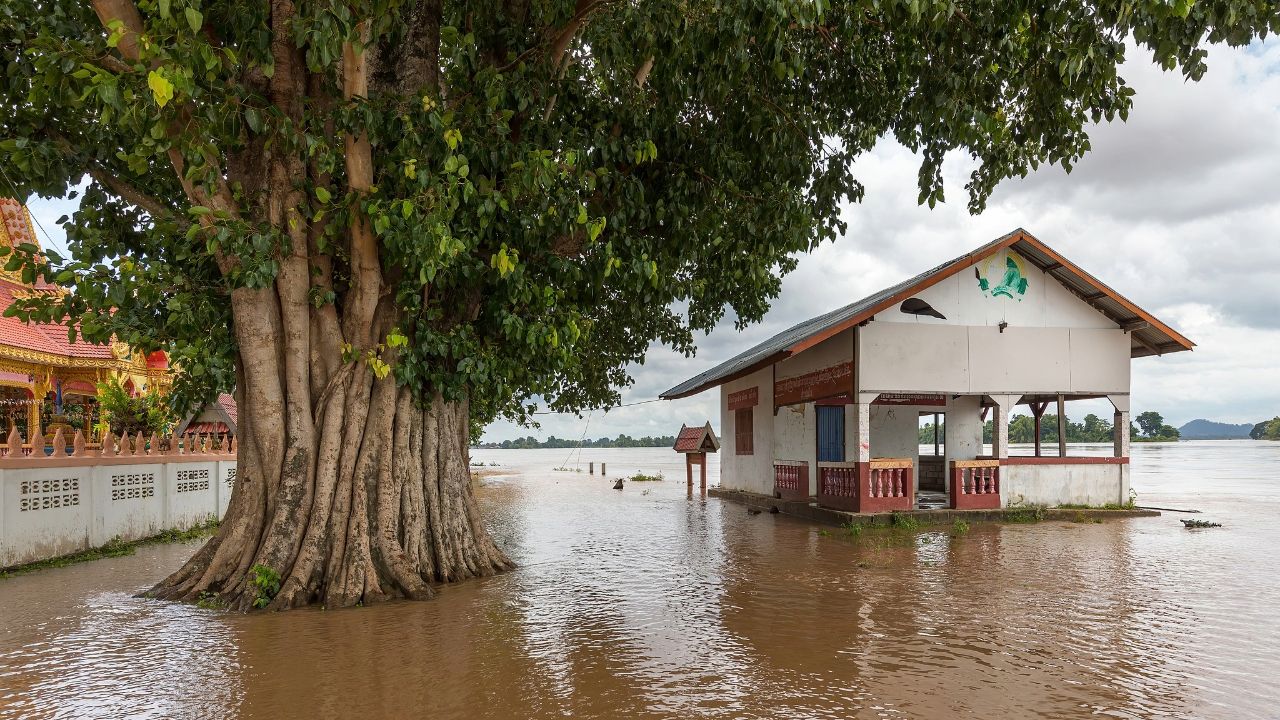This article was originally published at The Conversation. The publication contributed the article to Space.com’s Expert Voices: Op-Ed & Insights.
—
**How Artificial Intelligence Is Transforming Hurricane Storm Surge Forecasting**
Hurricanes are America’s most destructive natural hazards, causing more deaths and property damage than any other type of disaster. Since 1980, these powerful tropical storms have inflicted more than US$1.5 trillion in damage and claimed the lives of over 7,000 people.
The number one cause of hurricane-related damages and deaths is storm surge. Storm surge is the rise in the ocean’s water level caused by a combination of powerful winds pushing water toward the coastline and reduced air pressure within the hurricane compared to the pressure outside it.
In addition to these factors, waves breaking close to the coast cause sea level to increase near the shoreline through a phenomenon called wave setup, which can be an important component of storm surge.
—
### The Importance of Accurate Storm Surge Predictions
Accurate storm surge predictions are critical in giving coastal residents enough time to evacuate and allowing emergency responders to prepare adequately. However, producing high-resolution storm surge forecasts can be a slow process.
As a coastal engineer, I study how storm surge and waves interact with natural and human-made features on the ocean floor and coast, and explore ways to mitigate their impacts. I use physics-based models for coastal flooding and have recently been investigating how artificial intelligence (AI) can improve the speed and accuracy of storm surge forecasting.
—
### How Storm Surge Is Forecast Today
Operational storm surge forecasts currently rely on hydrodynamic models, which are based on the physics of water flow. These models incorporate environmental conditions such as:
– The storm’s speed and direction as it approaches shore
– Wind speed and direction
– Tide timing
– The shape of the seafloor and coastal landscape
Using this data, the models compute projected surge heights and determine which locations are at greatest risk.
Hydrodynamic models have improved substantially over recent decades. Powerful computers now allow rapid, low-resolution simulations that cover very large areas. However, high-resolution simulations that provide neighborhood-level detail may take several hours to complete. Those hours can be critical for communities needing to evacuate safely and for emergency responders preparing for impact.
—
### The Computational Challenge of High-Resolution Forecasts
To forecast storm surge over wide areas, modelers break the target region into many small pieces forming a computational grid or mesh—similar to pixels in an image. The smaller the grid cells, the higher the resolution and accuracy of the forecast.
But creating numerous small cells across a large area demands greater computing power, increasing the time required to run the forecast. Using lower resolution grids speeds up the process but sacrifices accuracy, which increases uncertainty about flood risks in affected communities.
—
### How AI Can Create Better Forecasts
There are two main sources of uncertainty in storm surge predictions:
1. **Input data uncertainty:** Forecasting a hurricane’s storm track and wind field—factors determining where it will make landfall and the surge’s intensity—is still difficult more than a few days in advance. Changes along the coast and seafloor, such as dredging or loss of natural features like salt marshes, mangroves, and sand dunes, also affect how storm surge behaves.
2. **Model resolution uncertainty:** The resolution of the computational grid affects how well the model captures changes in landscape and land cover, and the level of detail in physics calculations related to surge and wave motion.
AI models can produce detailed, accurate predictions much faster than traditional methods. For example, engineers and scientists have developed AI models based on deep neural networks that rapidly predict water levels along the coastline using data about the storm’s wind field. In some cases, these AI models have even outperformed traditional hydrodynamic models.
—
### Using AI with Synthetic Data to Forecast Unprecedented Events
AI can also generate forecasts for areas with little historical data or help understand extreme conditions that have not yet occurred but could in the future.
For such scenarios, physics-based models generate synthetic data that trains the AI on possible, but unrealized, events. Once trained on both historic and synthetic datasets, the AI can quickly produce surge forecasts using wind and atmospheric pressure inputs.
Training AI this way also enhances its ability to generate inundation risk maps that pinpoint streets or houses likely to flood in extreme events without historical precedent.
—
### The Future of AI in Hurricane Forecasting
Currently, AI is used in operational storm surge forecasting primarily to augment traditional physics-based models. My team and other researchers are exploring new ways to use AI for storm surge prediction using observed data, post-hurricane damage assessment, and analysis of camera images to estimate flood intensity.
This capability is crucial for validating storm surge models at detailed scales.
As AI technologies become more widespread and access to diverse datasets increases, AI holds great promise for improving hurricane and storm surge forecasts. This will provide coastal communities with faster, more detailed warnings about coming risks, ultimately helping save lives and reduce property damage.
—
*By integrating AI with physics-based models, the future of hurricane storm surge forecasting looks smarter and faster—giving at-risk communities a vital edge when facing these powerful natural hazards.*
https://www.space.com/science/climate-change/how-ai-can-improve-storm-surge-forecasts-to-help-save-lives
